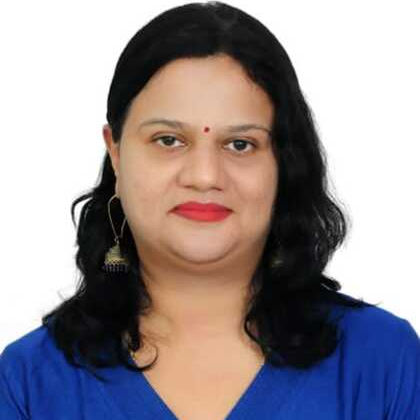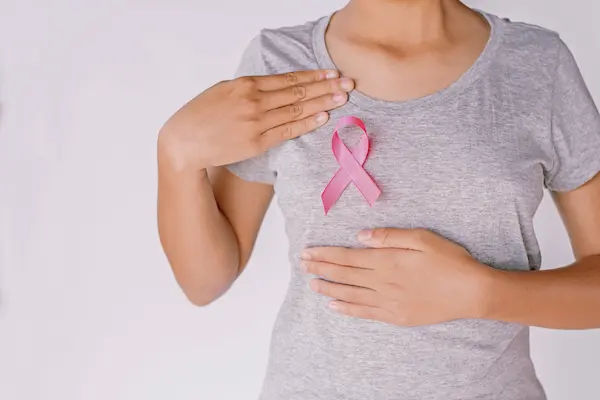Breast Cancer Warning Signs
Early detection of breast cancer is very important. Redness, nipple discharge, skin dimpling, breast form alterations, and new lumps are warning indicators. A timely diagnosis can be facilitated by awareness of these signs and regular self-examinations.

Written by Dr Sonia Bhatt
Last updated on 3rd Jul, 2025
When the body faces an illness, it displays several warning signs to make the person aware of the illness and help take precautions. It is the same with breast cancer—one of the most common cancers worldwide.
More often than not, breast cancer is confused with a breast lump. However, the symptoms may vary from person to person, depending on the type and stage of breast cancer they have. While many may have lumps, others may not. So it is highly necessary to understand the warning signs and take preventive measures.
Understanding Breast Cancer
Breast cancer is one of the most common cancers affecting women, men, and individuals assigned female at birth (AFAB) worldwide. It starts when the cells of the breast tissue grow out of control and form a tumour.
The tumour can remain confined in the breast (in situ) or spread to nearby tissues and lymph nodes (invasive). However, in advanced cases, it can metastasise to other parts of the body via either the bloodstream or the lymphatic system.
Types of Breast Cancer
Breast cancer types depend on the cells or origin:
| Type of Cancer | Description |
| Ductal Carcinoma | Originates in the milk ducts and spreads to nearby breast tissue. |
| Lobular Carcinoma | Develops in the milk-producing lobules and affects both breasts. |
| Ductal Carcinoma in situ | Starts in the milk glands in your breast but does not spread. |
| Triple-Negative Breast Cancer | This is a rare cancer that aggressively spreads compared to other types. |
| Inflammatory Breast Cancer | A rare, aggressive type of cancer where affected cells block lymph vessels, causing redness, swelling, and warmth in the breast. |
| Paget’s Disease | A rare cancer that affects the nipple and surrounding skin. |
Early Warning Signs and Symptoms
Here are a few warning signs and symptoms to detect breast cancer:
A new lump or thickening in the breast or underarm area that does not resolve.
Changes in breast size, shape, or contour.
Skin changes on the breast or nipple, including dimpling, puckering, redness, scaliness, or inflammation.
Nipple discharge, which may be clear, bloody, or sudden, occurs in one breast.
A nipple that turns inward or changes position.
Hardened, marble-like areas under the skin.
Persistent pain in any part of the breast.
Risk Factors for Breast Cancer
While breast cancer can happen to anyone at any time, women are significantly more at risk, though men can also develop breast cancer. Here are some risk factors to keep an eye out for:
Family History: A higher risk exists if close relatives (parent, sibling, or child) have breast cancer, especially at a young age or in multiple family members.
Personal History: Prior breast cancer increases the likelihood of developing it in the other breast.
Breast Conditions: Conditions like lobular carcinoma in situ (LCIS) or atypical hyperplasia, identified via biopsy, can signal an elevated risk.
Early Menstruation: Starting periods before age 12 raise the risk.
Late Menopause: Menopause after age 55 is linked to a higher likelihood of breast cancer.
Dense Breast Tissue: Dense breasts, with less fatty and more fibrous or glandular tissue, make detection harder and increase risk.
Alcohol Consumption: Regular alcohol use is associated with an increased risk.
Pregnancy History: Having a first child after age 30 or never being pregnant raises the risk, while multiple pregnancies lower it.
Age: The risk increases with age.
Genetic Mutations: Inherited changes in BRCA1 or BRCA2 genes significantly elevate the risk, though not everyone with these mutations develops cancer.
Hormone Therapy: Combined estrogen and progesterone therapies for menopause symptoms increase risk, which decreases after stopping treatment.
Obesity: Excess weight, particularly after menopause, is linked to a higher likelihood of breast cancer.
Radiation Exposure: Prior chest radiation during childhood or early adulthood elevates risk.
Diagnostic Procedures
Breast cancer is not easy to diagnose. Let’s look at some procedures that can help you take preventive measures -
1. Initial Examination
Diagnosis typically begins with the initial physical exam. During a clinical breast exam, a healthcare professional will check for unusual changes in the breasts, such as lumps or skin irregularities, and examine areas like the collarbones and armpits.
2. Imaging Tests
Mammogram: An X-ray of breast tissue used to screen for abnormalities. If concerns arise, a diagnostic mammogram provides a closer look.
Breast Ultrasound: Uses sound waves to determine if a lump is solid or fluid-filled, aiding further testing decisions.
Breast MRI: Uses magnetic fields and radio waves for detailed imaging, often with a dye injection to increase visibility. It can help detect cancer in both breasts or evaluate the extent of the disease.
3. Biopsy
A biopsy involves removing a sample of breast tissue for lab testing. Using imaging for guidance, a needle extracts tissue, often leaving a small marker for future monitoring. Lab tests confirm if the tissue is cancerous, identify the type, and assess features like hormone receptors, which help map the treatment plan.
4. Staging the Cancer
Determining the cancer’s stage involves tests like blood work, bone scans, CT scans, MRI, or PET scans. Stages range from 0 (non-invasive cancer confined to ducts) to 4 (cancer that has spread to other parts of the body). Staging helps guide prognosis and treatment decisions.
Importance of Regular Screenings
Regular screenings for breast cancer and overall health are very important. Here are some reasons why -
| Reason | Importance |
| Common Cancer | Second most diagnosed cancer; screenings aid early detection. |
| Self-Exams Insufficient | Some cases lack symptoms; professional screenings are crucial. |
| Early Detection Saves Lives | 99% survival rate when detected early. |
| Age Increases Risk | Annual mammograms are recommended from 40 or earlier for high-risk individuals. |
| Risk Insights | Screenings assess risks and guide preventive actions like genetic testing. |
Lifestyle Changes for Prevention
Adopting healthy habits can significantly reduce the risk of breast cancer, even for individuals at high risk. Here are key lifestyle changes to consider:
Limit Alcohol: Avoid alcohol or drink in moderation. Women should have no more than one drink per day, as even small amounts can increase risk.
Maintain a Healthy Weight: Keep your weight in a healthy range with portion control, balanced nutrition, and regular physical activity. Consult a healthcare professional for guidance.
Stay Active: Engage in at least 150 minutes of moderate or 75 minutes of vigorous aerobic exercise weekly. Include strength training twice a week to support overall health.
Breastfeed: Breastfeeding may offer protective benefits against breast cancer, with longer durations providing greater effects.
Limit Hormone Therapy: Minimise the use of combination hormone therapy after menopause. Consult your doctor to explore alternatives for managing menopausal symptoms.
Quit Smoking: Avoid tobacco use and exposure to second-hand smoke, as it may increase breast cancer risk. Seek support to quit if needed.
Treatment Options for Early Breast Cancer
Let’s look at some treatment options for early breast cancer detection -
1. Surgery
Lumpectomy: Removes the tumour and some surrounding tissue, preserving most of the breast.
Mastectomy: Removes all breast tissue, with options like skin- or nipple-sparing procedures for better reconstruction.
Lymph Node Removal: Sentinel node biopsy removes a few lymph nodes; axillary dissection removes more if cancer has spread.
Prophylactic Mastectomy: Removes the other breast to reduce future risk in high-risk cases.
2. Radiation Therapy
Destroys remaining cancer cells after surgery. Fatigue and skin irritation are common side effects.
3. Chemotherapy
Kills cancer cells, often before or after surgery. Side effects include hair loss, nausea, and fatigue.
4. Hormone Therapy
Blocks hormones like estrogen or progesterone to slow cancer growth. Includes SERMs, aromatase inhibitors, or ovarian suppression.
5. Targeted Therapy
Attacks specific cancer proteins like HER2 without harming healthy cells.
6. Immunotherapy
Enhances the immune system to fight cancer, especially triple-negative types.
7. Palliative Care
Improves quality of life by managing symptoms like pain and stress alongside cancer treatments.
Support Systems and Resources
Breast cancer patients can access various support systems and resources to navigate emotional, practical, and financial challenges:
Counselling Services: Oncology social workers provide emotional support and guidance.
Case Management: Assistance with addressing barriers to care through resource navigation.
Financial Support: Limited financial aid for eligible families to cover cancer-related expenses.
Support Groups: Free, professionally led groups include options for patients, survivors, and those with metastatic or triple-negative breast cancer, offered both online and in-person.
Community and Specialised Programs: Educational and support workshops tailored to specific needs, available in English and Spanish.
Conclusion
Breast cancer can be managed depending on early detection, healthy lifestyle changes, and gaining access to proper support networks.
Individuals are inclined to make informed decisions regarding their health when they are aware of the warning signals, risk factors, and accessible treatments. For individuals impacted by breast cancer, routine screenings can increase quality of life when combined with an enterprising approach to prevention and care.
Remember, early intervention saves lives, so be knowledgeable, watchful, and in touch with reliable medical professionals.
Consult Top Gynaecological Oncologist
Consult Top Gynaecological Oncologist

Dr. Rupam Manna
Radiation Specialist Oncologist
4 Years • MBBS MD(RADIO THERAPY)
Barasat
Diab-Eat-Ease, Barasat

Dr. Sreeparna Roy
Obstetrician and Gynaecologist
8 Years • MBBS , MS (OBSTETRICS & GYNAECOLOGY), Fellowship in Infertility, Endoscopy & Ultrasonography), Fellowship in Laparoscopy & Hysteroscopy,DRM
Kolkata
Dr Utsa Basu Clinic, Kolkata

Dr. Sai Lakshmi Daayana
Gynaecological Oncologist
18 Years • MBBS, MRCOG
Hyderabad
Apollo Hospitals Jubilee Hills, Hyderabad
(225+ Patients)

Dr. Revathi S Rajan
Obstetrician and Gynaecologist
24 Years • MBBS, DGO, DNB.FFMM
Bengaluru
Apollo Clinic, JP nagar, Bengaluru
Dr. Navin Srinivasan
Gynaecological Oncologist
9 Years • MBBS, MS DNB(OBS-GYNAE), MCH (GYNAE ONCOLOGY)
Bengaluru
Apollo Clinic Mahadevapura, Bengaluru




